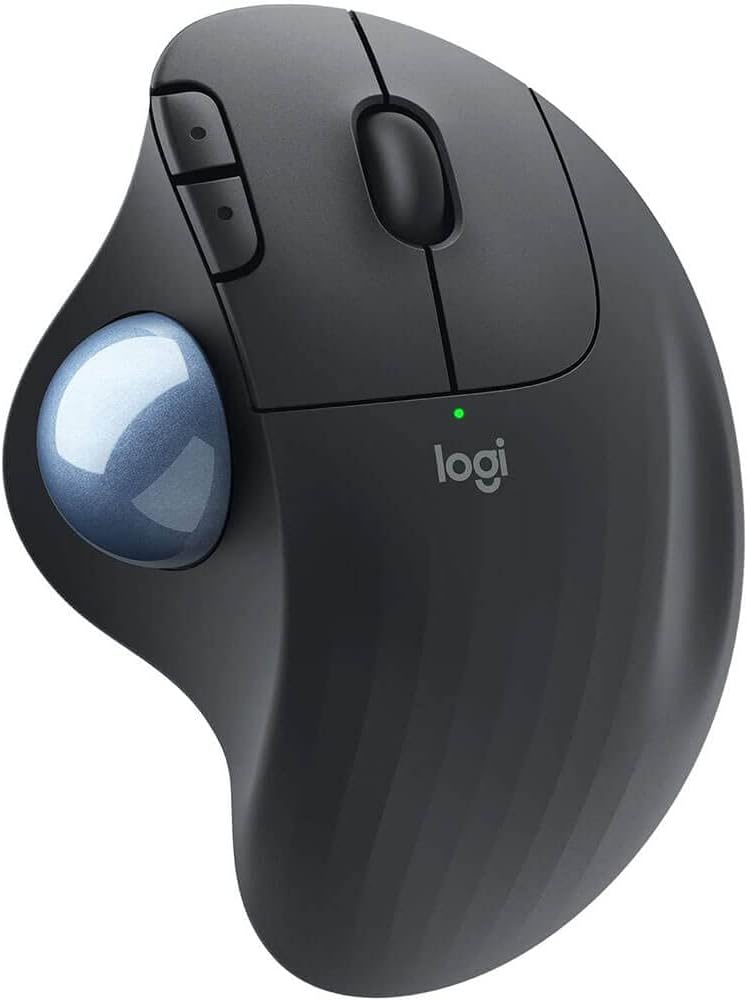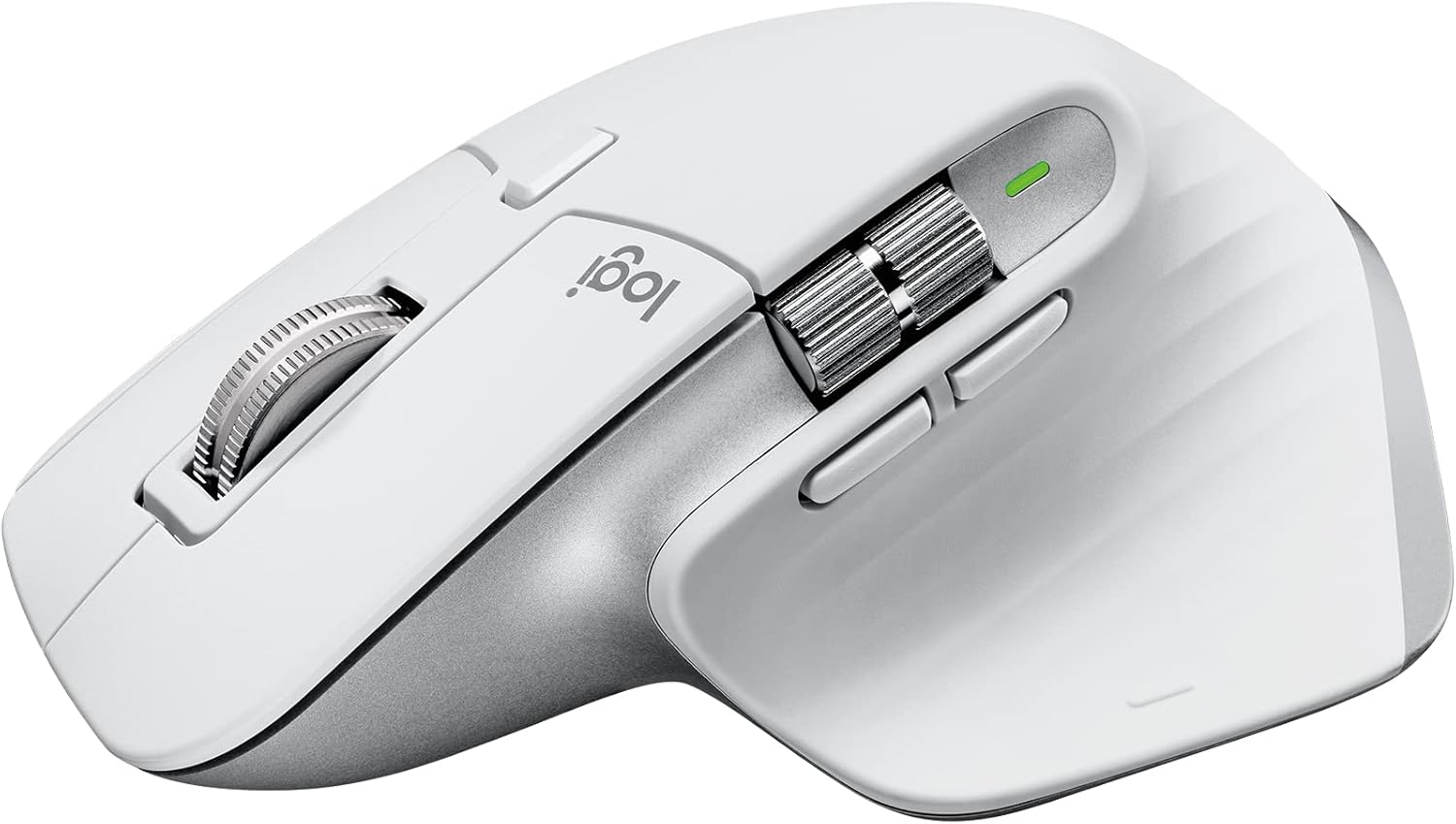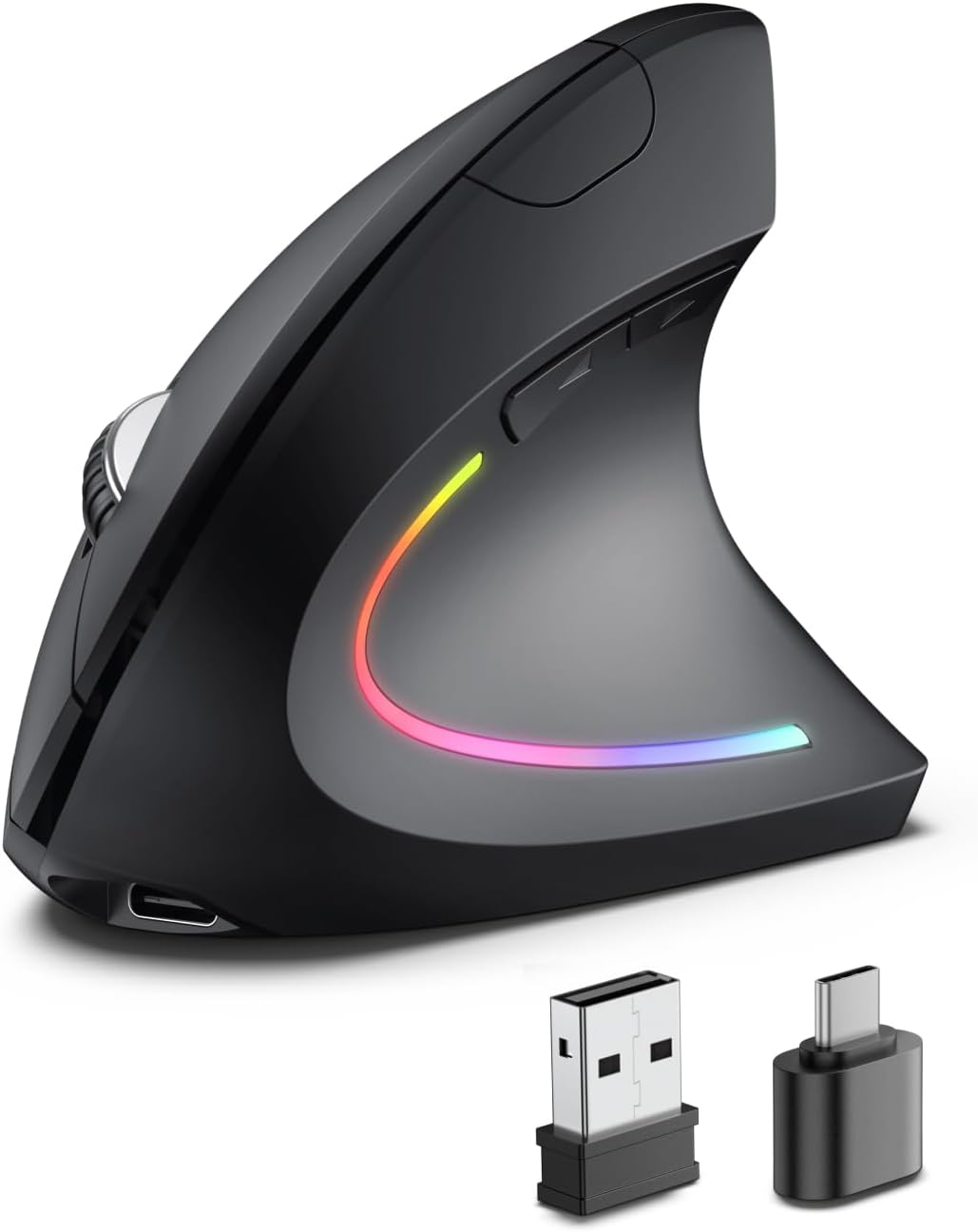Here’s an overview of the Best Mouse For that we’ll explore today:
Graphic designers rely on precise input, comfortable long sessions, and reliable multi-device workflows. The five mice in this comparison span a spectrum from budget-friendly ergonomics to premium multi-computer productivity tools, ensuring options for students, professionals, and power users. My methodology combines objective measurements (DPI range, tracking on diverse surfaces, battery life, latency) with real-world tests (document and image editing, UI navigation, color-critical tasks, and cross-device workflow). Each device was evaluated for comfort over extended use, accuracy in fine detail work, and how well its features translate to graphic design tasks such as vector work, photo retouching, and UI/UX mockups. The lineup covers POJTK, TECKNET, and Logitech offerings, including trackball and vertical designs, 2.4 GHz wireless, Bluetooth, and cross-computer capabilities.
1. Logitech MX Master 2S Wireless Mouse – Hyper-Fast Scrolling
- Brand: Logitech
- Manufacturer: Logitech
Overview: The MX Master 2S is a seasoned flagship from Logitech that emphasizes ergonomic comfort, strong battery life, and cross-computer control. It supports Bluetooth and USB wireless connectivity, and is part of the ecosystem that introduced Logitech Flow for seamless cross-computer copy-paste across up to three devices. It’s a rechargeable, ergonomic wireless option with a familiar design language that many designers have praised for long sessions.
Performance and use cases: The MX Master 2S excels in productivity pipelines, especially when working with layered documents or multi-monitor setups. Its precision and the ability to navigate across three machines via Flow can streamline asset transfer in multi-device environments. The ergonomic grip reduces fatigue during long editing sessions, and the included rechargeable battery eliminates frequent battery changes. However, for graphic design that demands very high precision at ultra-fine zoom levels, the sensor ranking (trackball in some variants) and older optical tracking may not feel as modern as newer MX models. The device remains comfortable for controlled panning and brush work in Photoshop or Illustrator, and the multi-computer flow is a standout for teams sharing workstations.
Pros
- Cross-computer control with Logitech Flow for seamless multi-device workflows
- Ergonomic comfort suitable for long design sessions
- Rechargeable battery with convenient USB charging
- Bluetooth and 2.4 GHz wireless options
- Solid build quality and widely supported software ecosystem
Cons
- Older sensor technology relative to newer MX models
- Slightly heavier than some modern ergonomic mice
- Not the most compact option for travel
2. TECKNET Wireless Mouse
- Brand: TECKNET
- Manufacturer: TECKNET
Overview: The TECKNET is a budget-friendly, compact, ergonomic option with 6 programmable buttons, up to 2600 DPI, and an advertised 24 months of battery life. It uses a USB-A receiver for plug-and-play setup and offers a range up to 49 feet. It’s notable for value per dollar and travel-friendly dimensions, making it an attractive choice for students or freelancers who need a dependable secondary device.
Performance and use cases: The 5-level DPI range provides adequate precision for general graphic tasks like rough selection, wireframing, or quick edits on-the-go. The ergonomic contour with rubber side grips supports comfortable daily use, but the layout and primary click feel may not match premium mice in click latency or smoothness. Given its 2.4 GHz/USB connectivity and no software-based customization described, more advanced users may miss per-app macros or advanced elevation of pointer precision. Battery life is excellent in theory, but real-world usage depends on the included AAA batteries, which aren’t included, and user habits.
Pros
- Extremely affordable at $9.99
- 6 programmable buttons offer practical shortcuts
- Long theoretical battery life (up to 24 months)
- Lightweight and travel-friendly
- Broad compatibility with Windows, Mac, Chrome OS, and Linux
Cons
- AAA batteries required (not included) and not rechargeable
- Limited on-board customization without software
- Basic optical sensor performance compared to premium mice
3. Logitech M575 Ergonomic Wireless Trackball USB Mouse
- Brand: Logitech
- Manufacturer: Logitech
Overview: The M575 is Logitech’s trackball approach to ergonomic design, offering stationary cursor control with a thumb-operated ball. It connects via Bluetooth or USB, delivering a stable alternative for users who want to minimize arm movement and optimize desk space. It’s tailored for multi-OS environments and includes a comfortable, sculpted form with a post-consumer recycled plastic composition in some colorways.
Performance and use cases: Trackball mice like the M575 shine in tight workspaces and for tasks requiring long, precise gestures without wrist motion, such as fine photo retouching or vector edits with little desk movement. The lower nominal 400 DPI sensor will feel less precise at high-resolution displays compared to modern 4K workflows, but for smooth scrolling and steady pointer control, it shines. The dual connectivity helps maintain a clean workspace and reduces cable clutter. Some users may need time to adapt for cursor placement and may miss the tactile feedback of traditional mice.
Pros
- Ergonomic trackball design reduces wrist strain
- Dual connectivity (Bluetooth and USB receiver)
- Cross-OS compatibility with broad device support
- Long battery life and stable wireless connection
- Compact footprint for crowded desks
Cons
- Lower DPI and different cursor dynamics than optical mice
- Trackball requires a learning curve for precision tasks
- Not ideal for users who prefer moving the device rather than the ball
4. Logitech MX Master 3S for Mac – Wireless Bluetooth Mouse with Ultra-Fast Scrolling
- Brand: Logitech
- Manufacturer: Logitech
Overview: The MX Master 3S for Mac is a premium, Apple-optimized variant of Logitech’s MX line. It emphasizes MagSpeed scrolling, 8K DPI track-on-glass sensor, and quiet clicks, with App-specific profiles and cross-device workflows across up to three Macs. It uses USB-C charging and promises up to 70 days of battery life per full charge, with a rapid 3-hour charge providing meaningful runtime. It’s designed to blend into macOS workflows with macOS-specific features and profiles.
Performance and use cases: For designers, the 8K DPI sensor on glass translates to ultra-precise cursor control on high-resolution displays, enabling fine-tuned edits, precise vector work, and accurate color-sensitive tasks. MagSpeed scrolling accelerates navigation through large canvases or long documents, while the ergonomic shape supports comfortable all-day use. The macOS-optimized options, app-specific profiles, and multi-Mac workflow are strong differentiators for professionals who operate across multiple Macs or iPads. A potential drawback for some users is the premium price and the fact that some features are tailored to Apple ecosystems, which could limit functionality on non-Apple platforms.
Pros
- Apple-optimized for macOS and iPadOS
- 8K DPI sensor with track-on-glass performance
- MagSpeed scrolling with near-silent clicks
- App-specific profiles and multi-Mac workflow
- Long battery life with fast USB-C charging
Cons
- Premium price at $99.99
- Best experience with macOS; limited Windows-only nuances
- Some advanced features rely on Logi Options Plus
5. Ergonomic Wireless Rechargeable Mouse
- Brand: POJTK
- Manufacturer: POJTK
Overview: POJTK offers a vertical ergonomic design with a 58-degree tilt, USB-A and USB-C connectivity, including Bluetooth 5.3 and 2.4 GHz options. It supports up to 4800 DPI across five levels, features six silent buttons, and markets itself as a carpal-tunnel-friendly option with rechargeable power and flexible compatibility across Windows, macOS, Linux, and other platforms.
Performance and use cases: The vertical orientation reduces pronation and wrist strain, which can be beneficial for long design sessions. The 4800 DPI capability provides high precision on varied surfaces, and the 3-in-1 connectivity enables seamless switching between devices and ports. The silent button design is a plus in shared environments. However, the presence of a 9V battery for power (included) is unusual in modern devices and may not align with many users’ expectations for standard rechargeable Li-ion batteries. The overall sensor performance will depend on the surface and optical sensor quality, and macro customization is not clearly described.
Pros
- Vertical ergonomic design reduces wrist strain
- Versatile 3-in-1 connectivity (BT, USB-A, USB-C)
- High DPI up to 4800 for precise control
- Six silent buttons suitable for quiet environments
- Broad compatibility across major OS families
Cons
- Battery type (9V) and included charging considerations
- Limited on-board customization without software
- Not as refined as premium MX mice in sensor quality
Frequently Asked Questions
We’ve compiled answers to the most common questions about mouse fors to help you make an informed decision.
Conclusion
.
.
Final thoughts here.




